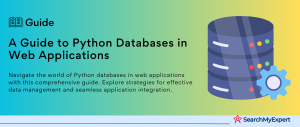Building Microservices with Python: An Insightful Journey
Microservices Architecture: A Modular Revolution
Microservices architecture is a cutting-edge approach in software development. It involves constructing an application as a collection of small, independent services, each dedicated to a specific business function. This is a significant shift from the traditional monolithic architecture, where an application is built as a single, intertwined unit.
The Edge of Microservices
- Scalability: With microservices, scaling specific functionalities becomes a breeze. You can expand or contract services independently to meet changing demands.
- Resilience:
The isolated nature of each service ensures that a problem in one doesn’t paralyze the entire application. This resilience is crucial for maintaining robust systems. - Fault Isolation:
Issues can be pinpointed and fixed swiftly, without affecting the overall system, ensuring continuous operation and stability.
Microservices vs. Monolithic Architecture
In the world of microservices, each function of an application stands alone, operates independently, and communicates via lightweight mechanisms like APIs. This is in stark contrast to monolithic architecture, where all functions are interwoven within a single unit. In a monolithic setup, scaling necessitates scaling the entire application, and a fault in one area can take down the whole system. Microservices offer an agile, fault-tolerant alternative that’s easier to manage and update.
The Microservices Ecosystem: Containers and APIs
The ecosystem for microservices often involves:
- Containers (like Docker and Kubernetes):
These technologies encapsulate microservices in a consistent environment, making them portable and scalable across various platforms. - APIs (Application Programming Interfaces):
APIs are the linchpins in a microservices architecture, facilitating seamless interaction between various independent services.
Building microservices with Python offers a flexible, robust, and scalable approach to software development. By breaking down applications into smaller, manageable pieces, organizations can achieve greater efficiency and resilience in their operations.
Designing Microservices with Python
Crafting a Microservices Blueprint
Identifying Microservices in Your Application
The journey to microservices begins with recognizing the distinct functionalities within your application that are apt for microservices. This step is crucial for ensuring each microservice is focused, manageable, and serves a specific purpose.
- Look for Modular Components: Identify parts of your application that can function independently.
- Assess Scalability Needs:
Consider which functionalities will benefit most from the scalable nature of microservices.
Applying Domain-Driven Design (DDD) Principles
Domain-Driven Design is a strategic approach to software development that focuses on the core business logic. When designing microservices:
- Define Clear Boundaries:
Establish the limits of each microservice based on business capabilities. - Assign Responsibilities:
Ensure each microservice has a distinct responsibility that aligns with your business objectives.
Designing Effective APIs for Microservices Communication
APIs are the communication backbone in a microservices architecture. When designing these APIs:
- RESTful APIs:
Leverage RESTful principles for creating scalable and flexible interfaces. - gRPC for High-Performance: Consider gRPC for scenarios requiring high-performance, bi-directional streaming, and tight service-to-service communication.
Designing microservices with Python involves a thoughtful process of identifying the right functionalities, applying DDD principles, and designing robust APIs. This foundational work sets the stage for a scalable, resilient, and efficient microservices architecture.
Choosing the Right Python Frameworks for Microservices
Navigating the Python Framework Landscape
Exploring Popular Python Frameworks
When building microservices with Python, selecting the right framework is crucial. Let’s delve into three popular choices:
- Flask:
Known for its simplicity and lightweight nature, Flask is a go-to for developers who prefer a minimalistic approach. - Django REST Framework: An extension of Django, this framework is robust and full-featured, ideal for complex applications.
- FastAPI:
A modern, fast framework that’s gaining traction for its performance and ease of use, especially in building APIs.
Comparing Frameworks: Performance, Features, and More
- Performance:
FastAPI stands out for its speed, while Flask offers simplicity and flexibility. Django REST Framework is robust but can be heavier. - Feature Set:
Django REST Framework leads with its comprehensive features. FastAPI provides modern functionalities like asynchronous support. Flask, while lean, can be expanded with extensions. - Ease of Use:
Flask’s straightforward nature makes it highly accessible to beginners. FastAPI, with its intuitive design, is also user-friendly. Django REST Framework, while powerful, has a steeper learning curve. - Community Support:
Django REST Framework and Flask benefit from large, established communities. FastAPI’s community is rapidly growing, offering modern solutions and active support.
Selecting the Perfect Fit
The choice boils down to your project’s specific needs:
- Small, Simple Projects: Flask is ideal for its simplicity and flexibility.
- Complex, Feature-Rich Applications: Django REST Framework is your go-to for a comprehensive solution.
- Performance-Centric, Modern Applications: FastAPI is the best choice for speed and modern features.
The decision to use Flask, Django REST Framework, or FastAPI should align with your project requirements, considering factors like performance, feature set, ease of use, and community support.
Implementing Microservices with Python
Mastering Your Chosen Framework
Understanding Your Framework
Once you’ve selected a Python framework, it’s crucial to understand its ins and outs:
- Structure:
Familiarize yourself with the framework’s architecture and how it organizes code and dependencies. - Features:
Explore the features your chosen framework offers, such as request handling, data validation, and serialization. - Development Workflow: Learn the standard practices for development within the framework, from setting up environments to deploying applications.
Developing Microservices
- Best Practices:
Follow coding standards, write clean and maintainable code, and adhere to security best practices. - Isolation of Services:
Ensure each microservice is self-contained, with its own set of dependencies and a clearly defined scope.
Implementing Data Management Strategies
- Databases: Choose appropriate databases (SQL or NoSQL) based on the data requirements of each service.
- Message Queues: Utilize message queues like RabbitMQ or Kafka for asynchronous communication between microservices, enhancing scalability and fault tolerance.
Implementing microservices with Python involves a deep dive into the chosen framework, developing services with best practices, and establishing robust data management strategies. This approach leads to efficient, scalable, and maintainable microservices-based applications.
Testing and Deployment of Microservices with Python
Ensuring Quality and Efficiency
Comprehensive Testing Strategies
Testing is pivotal in the microservices architecture:
- Unit Testing: Test each microservice independently to ensure its functionality.
- Integration Testing:
Assess how well different microservices interact and communicate. - End-to-End Testing: Validate the entire application flow, from the user interface to data storage.
Implementing CI/CD Pipelines
Continuous Integration and Continuous Delivery (CI/CD) are crucial for microservices:
- Automated Builds: Ensure code changes are automatically built and tested, reducing integration issues.
- Automated Deployments: Enable frequent and reliable deployment of microservices, enhancing productivity and reducing manual errors.
Utilizing Containerization for Deployment
Docker and similar technologies are game-changers:
- Scalability and Portability: Containerization allows microservices to be easily packaged, distributed, and scaled across different environments.
- Consistency: Containers offer a consistent environment from development to production, reducing the “it works on my machine” syndrome.
The testing and deployment phase in microservices development with Python involves rigorous testing strategies, implementing CI/CD for automation, and leveraging containerization for efficient deployment. This multi-faceted approach ensures that microservices are reliable and scalable, and maintain a high standard of quality.
Monitoring and Observability of Microservices with Python
Keeping a Watchful Eye
Setting Up Monitoring Systems
Effective monitoring is key for maintaining healthy microservices:
- Health Metrics: Track key performance indicators like uptime, response time, and resource utilization.
- Alert Systems: Set alerts for anomalies or performance issues to ensure quick response.
Implementing Logging and Tracing
Understanding microservice behavior is essential:
- Logging:
Collect logs to keep a record of events and states within each microservice. - Tracing: Implement tracing to follow a request’s path through the microservices, which is crucial for debugging and understanding system behavior.
Utilizing Dashboards and Visualization Tools
Visualization is vital for insights:
- Dashboards: Use dashboards to get an at-a-glance view of the health and performance of microservices.
- Data Visualization: Employ tools for visualizing metrics and logs, facilitating quicker analysis and decision-making.
Monitoring and observability in microservices involve setting up robust monitoring systems, implementing logging and tracing for deeper insights, and utilizing dashboards and visualization tools for effective oversight. This comprehensive approach ensures that the microservices are performing optimally and issues can be swiftly identified and resolved.
Best Practices and Advanced Techniques in Microservices with Python
Elevating Security and Efficiency
Security Considerations
Ensuring the security of microservices is paramount:
- Authentication and Authorization: Implement robust mechanisms to verify user identities and manage access control.
- Encryption: Secure data in transit and at rest, using encryption protocols to protect sensitive information.
Asynchronous Communication Patterns
Enhancing microservices interaction:
- Event-Driven Architecture: Adopt an event-driven approach for decoupled, scalable communication between services.
- Message Brokers and Queues: Use message brokers like RabbitMQ or Kafka to facilitate asynchronous messaging.
Service Discovery Patterns and Tools
Facilitating dynamic microservice management:
- Dynamic Discovery:
Implement service discovery to automatically detect and connect microservices in the network. - Registration Tools: Utilize tools like Eureka or Consul for service registration and discovery, ensuring seamless interaction between services.
Conclusion
Employing best practices and advanced techniques in microservices involves a focus on robust security measures, leveraging asynchronous communication patterns for efficient interactions, and utilizing service discovery patterns for dynamic management. These practices ensure a secure, efficient, and scalable microservices architecture.
Shape your software strategy with our Python Development Service Company.
Table of Contents
Toggle






